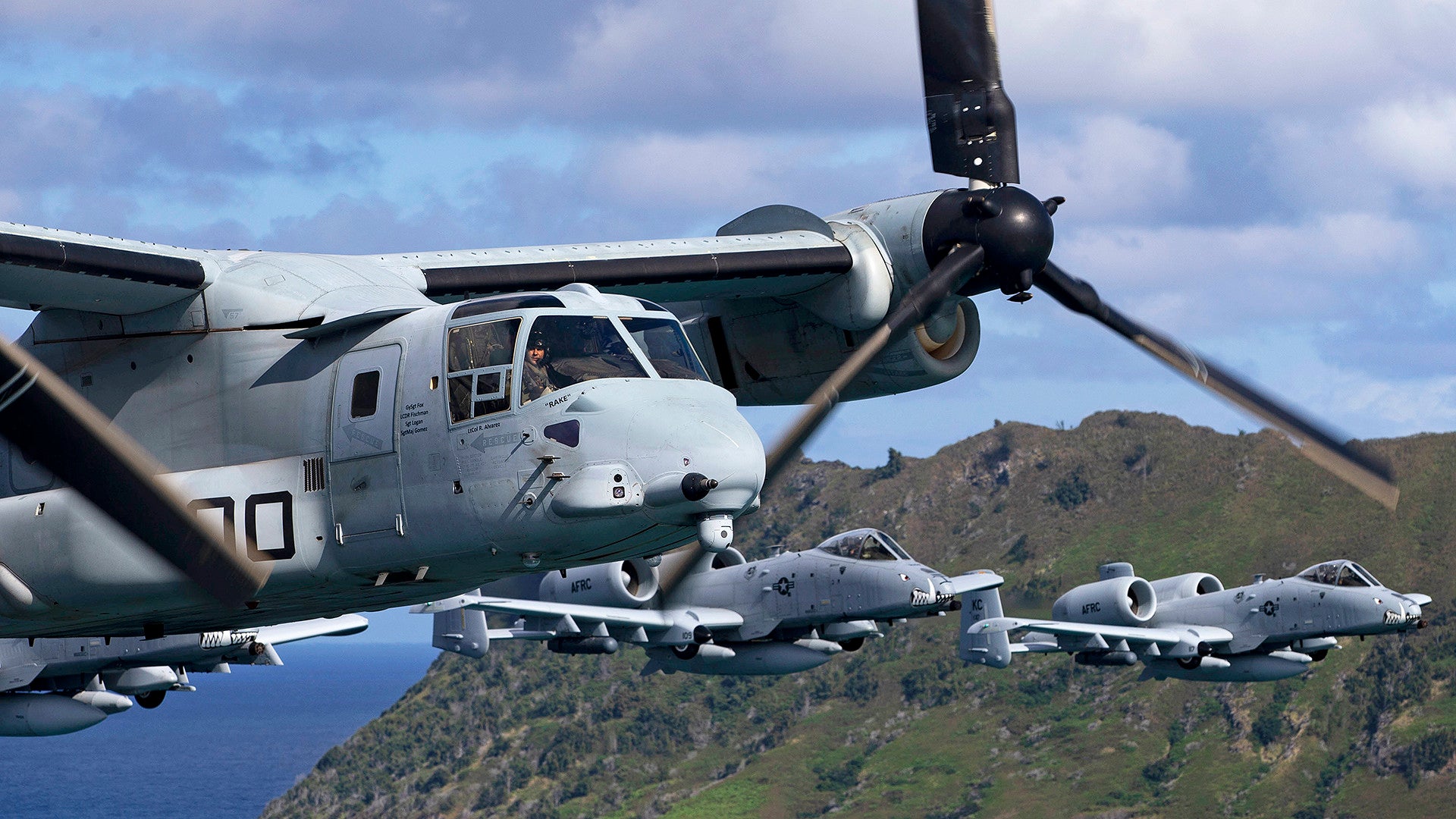A U.S. Marine Corps MV-22B Osprey tilt-rotor has flown for the first time with an Intrepid Tiger II electronic warfare system. The Marines have previously fielded versions of Intrepid Tiger on the AV-8B Harrier jump jet, F/A-18C/D Hornet fighter jet, the KC-130J Hercules tanker-transport, and the UH-1Y Venom armed utility helicopter. The hope is that the variant for the Osprey, which includes new radar jamming functionality, will be a stepping stone to further expanding the electronic warfare capabilities available to the Marine Corps’ current and future aircraft fleets.
The U.S. Navy’s Naval Air Systems Command (NAVAIR), in cooperation with the Marine Corps, conducted the flight test at Naval Air Station Patuxent River in Maryland on June 15. The formal designation of the Intrepid Tiger variant for the Osprey, which has been years in the making now, is AN/ALQ-231(V)4 and is also commonly referred to as the Intrepid Tiger II (IT II) (V)4.
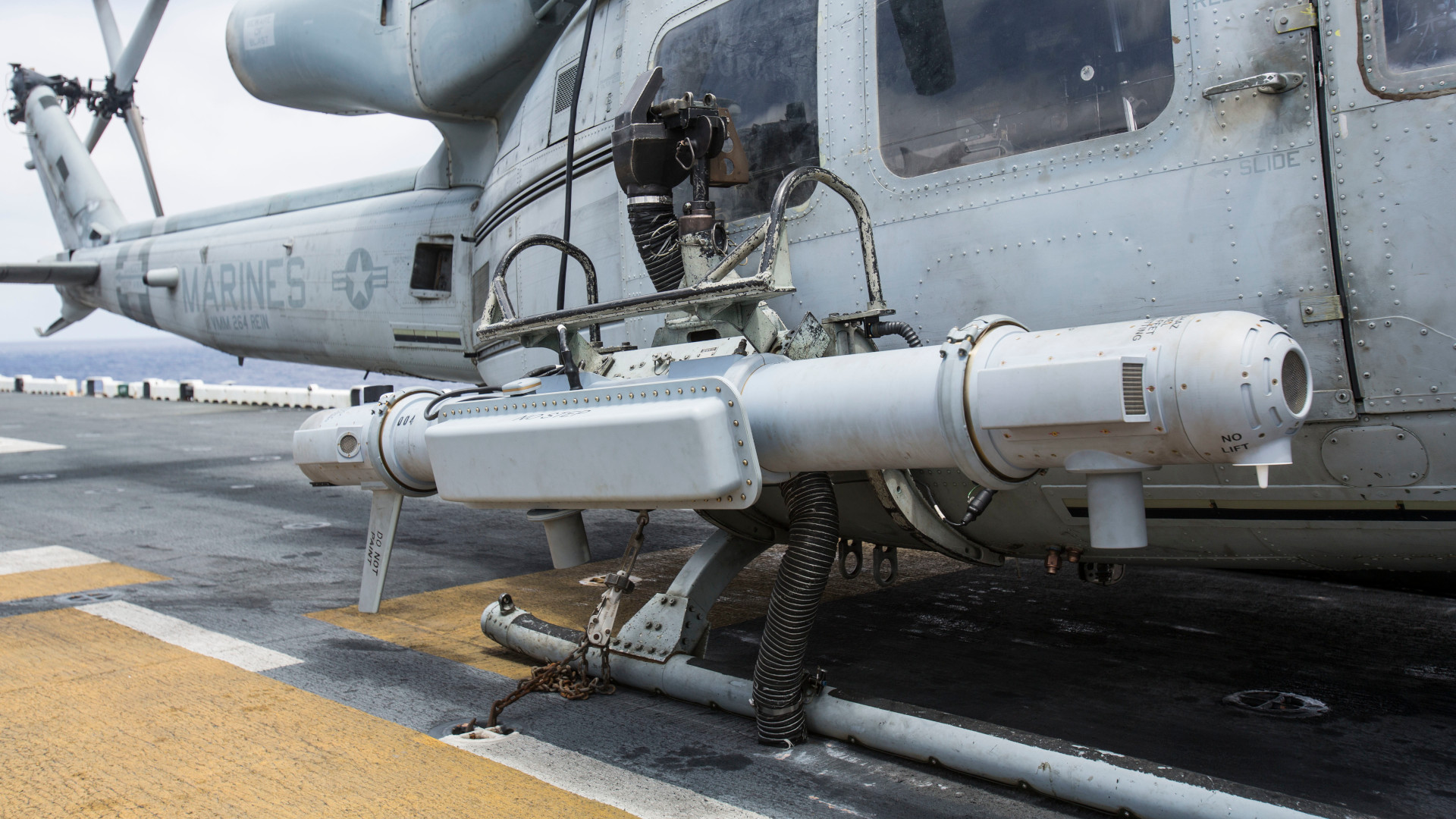
“The significance of this developmental test flight was two-fold,” U.S. Navy Captain Michael Orr, head of NAVAIR’s Airborne Electronic Attack Systems Program Office, said in a statement. “Not only was this the first time we’ve integrated the Intrepid Tiger II capability onto an Osprey but also the first time the capability has been incorporated internal to a platform.”
The MV-22B, in its present form, does not have the ability to carry external stores of any kind operationally, though the Marine Corps has carried out various tests in the past, including the launching of laser-guided 70mm rockets from a pod mounted on a pylon attached to the side of the aircraft’s forward fuselage.

This means that the Osprey cannot readily carry either of the two distinct versions of Intrepid Tiger II that are in use now, both of which are podded. The AN/ALQ-231(V)1, originally fielded on the AV-8B, is also used on the F/A-18C/D and the KC-130J. The UH-1Y is presently the only platform to use the improved AN/ALQ-231(V)3.

There is no description readily available of what the AN/ALQ-231(V)2 variant might have been, or what aircraft it was intended to be used on. There had previously been discussion about developing a version of the Intrepid Tiger system for use on the F-35 Joint Strike Fighter as part of the plans for replacing the Marines EA-6B Prowler electronic warfare planes. It is of course, worth noting, that all of the variants of the F-35, including the Bs and Cs that the Marine Corps flies, already have robust internal electronic warfare suites.
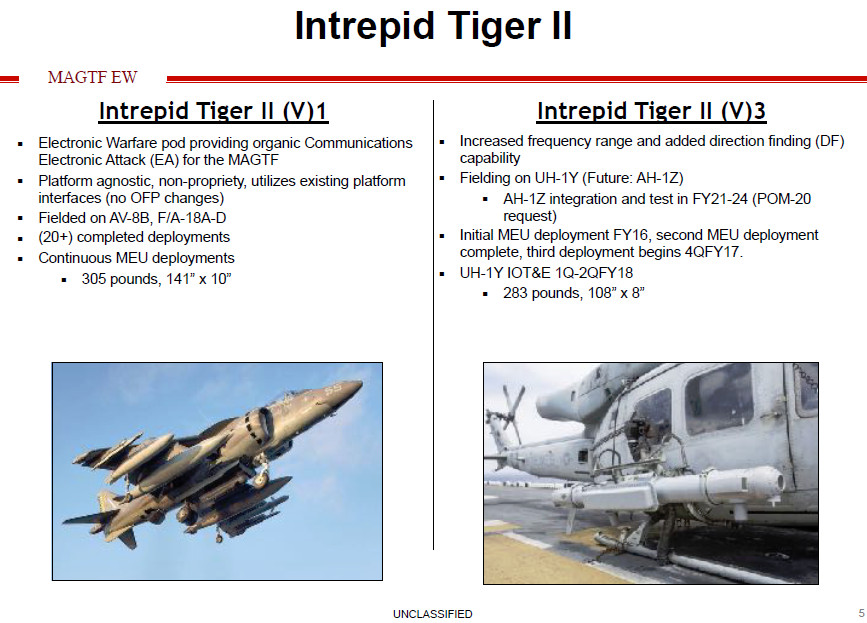

Regardless, there is no indication that the Marines are pursuing an IT II (V)2 variant for use on any platform now. There had been plans for a version of the RQ-21A Blackjack drone, which was previously in line to be designated as the (V)4 type, too. However, that effort appears to have been shelved and the Marine Corps is now in the process of divesting its entire RQ-21A fleet.
Instead, the IT II (V)4 system is designed to be a roll-on/roll-off payload that is centered on an equipment rack that goes inside the Osprey’s main cabin. It’s unclear where the antennas associated with the system are mounted. An operator then uses a laptop computer to control its functionality. A laptop control system has also been observed in use with the IT II (V)3 variant.
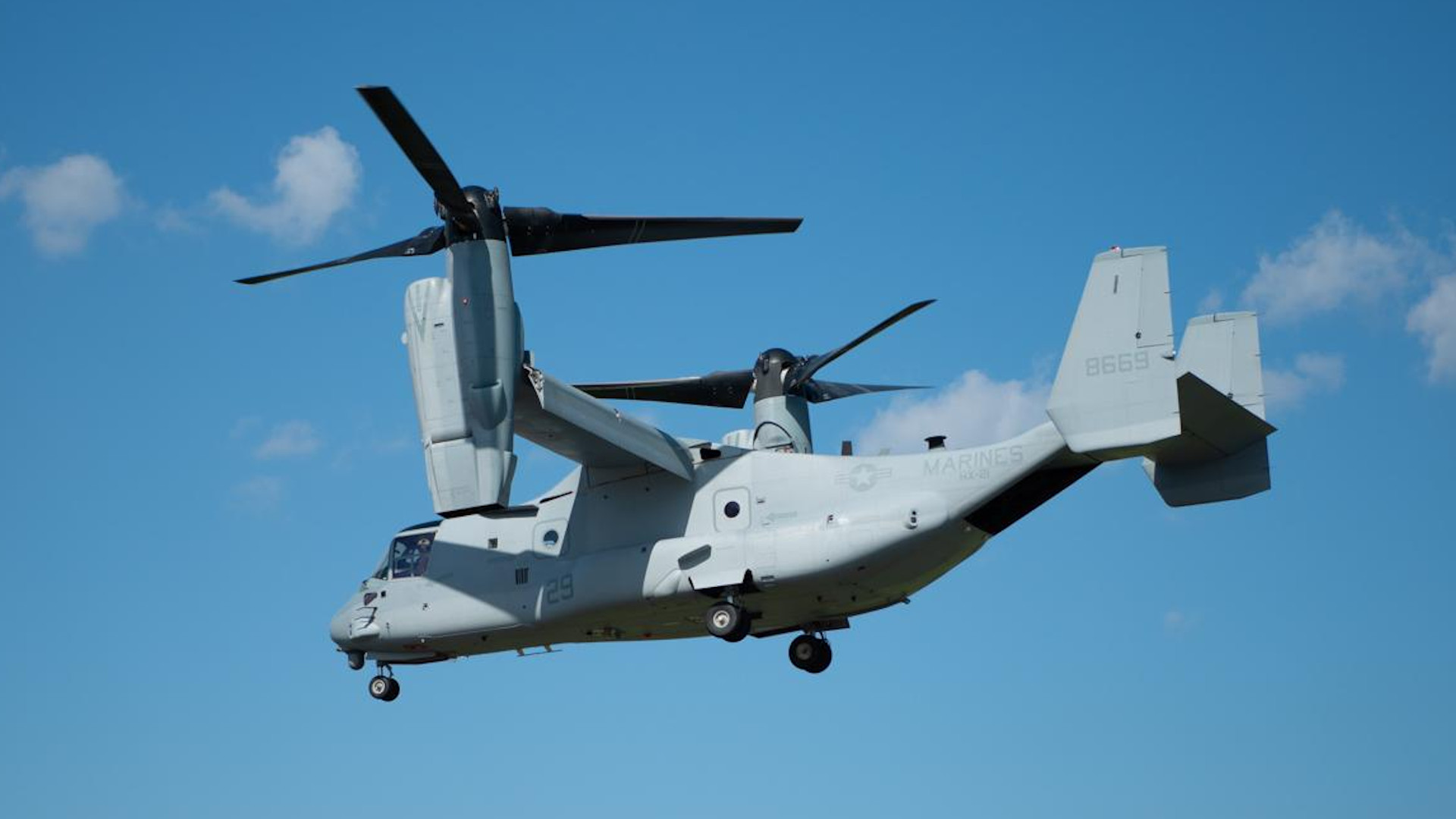
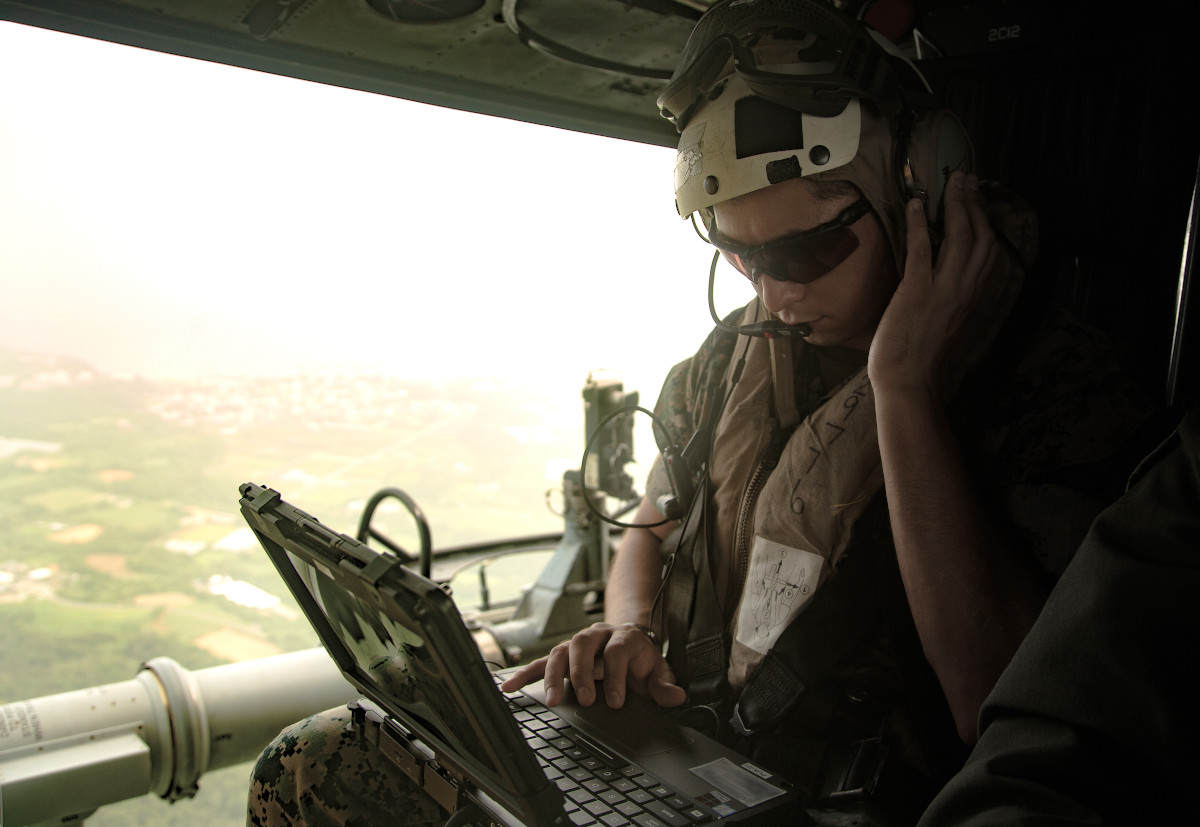
At its core, the Intrepid Tiger family of systems are primarily electronic warfare jammers. The initial versions were developed and fielded quickly to provide additional electronic warfare capacity in support of operations in Iraq and Afghanistan. As such, they were primarily tailored toward communications jamming and could also be used to disrupt remotely-triggered improvised explosive devices (IED). They also had secondary intelligence-gathering capabilities, allowing operators to actually snoop on enemy communications chatter.
Intrepid Tiger II can selectively jam certain frequencies and the total frequency range that the system could cover was expanded in the IT II (V)3 version. That variant also added in direction-finding capability, allowing equipped UH-1Ys to detect and attack hostile transmissions. That capability enables the system to help locate the exact position of enemy forces, which could then be struck or avoided, as well as provide general increased situational awareness.
At the same time, Intrepid Tiger was also part of a broader “system of systems” concept for replacing the robust electronic warfare capabilities that the EA-6B Prowler had offered. With this in mind, the IT II (V)4 system for the Osprey notably adds long-planned self-protection capabilities in the form of a new ability to detect and jam enemy radars. This improved functionality, which has been referred to in the past as the Block X upgrade for the Intrepid Tiger II system, is also set to be integrated into existing IT (V)1 pods.
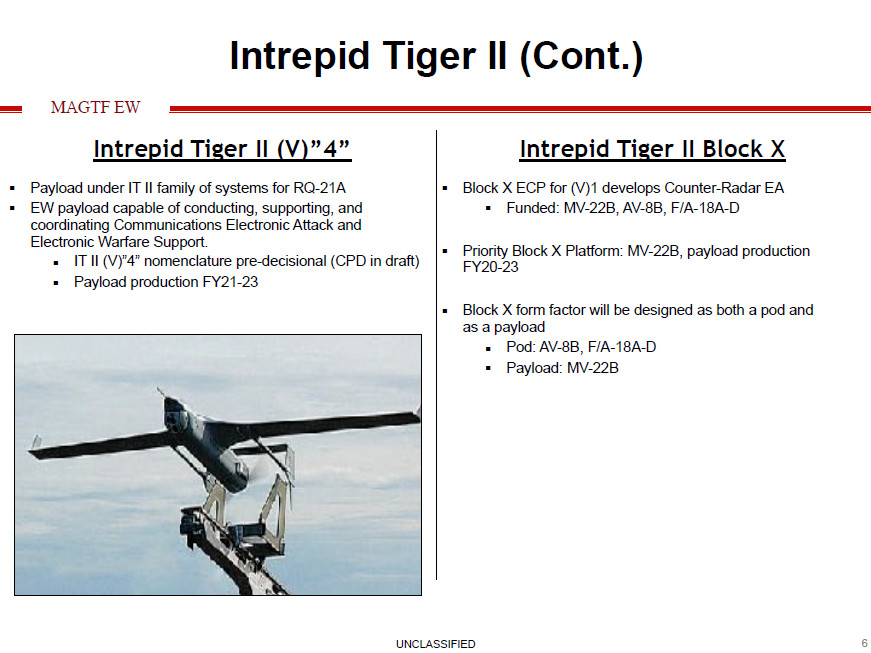
This is a significant development that takes Intrepid Tiger II from being primarily geared toward use in lower-end conflicts and moves it toward a system that would be more useful in higher-end scenarios where more robust hostile air defenses and ever more advanced enemy aircraft may be significant threats. This of course comes as the U.S. military, as a whole, continues to shift its focus toward preparing for potential fights with larger, more capable adversaries, including potential near-peer opponents, such as China or Russia. Many smaller countries, and even non-state actors, are increasingly fielding more capable anti-air weaponry, as well.
“As the 21st Century Battlespace becomes more complex and more contested, military assets must support themselves across the entire spectrum of threats,” U.S. Marine Corps Colonel Brian Taylor, V-22 Joint Program Office Program Manager, said in a statement after the flight test of the Intrepid Tiger II-equipped Osprey. “The fielding of this upgrade provides a significant and incremental improvement in the V-22’s organic electronic warfare capability, providing commanders more options to support our Marine Corps ground forces. This improves both operational safety to our aircrews and operational success to the commander, our ultimate goals in everything we do.”
For Marine Ospreys, which are non-stealthy platforms, Intrepid Tiger would give the tilt-rotors a valuable additional layer of protection when working in more contested environments. This could be especially valuable when conducting what the Marines refer to as tactical recovery of aircraft personnel, or TRAP, as well as combat search and rescue (CSAR). In the past, the Corps has described TRAP as distinct from CSAR, with the latter involving the expectation of enemy resistance, while the former does not. However, TRAP missions could still be conducted in areas where there might be a risk of threats suddenly emerging.
The Navy and Marines are now hoping to be able to port over the IT II(V)4 variant to the KC-130J, which would give those aircraft this added defensive electronic warfare capability, as well as remove the need for them to carry a podded version of Intrepid Tiger. That would also eliminate the need to use one of the aircraft’s underwing pylons for this purpose, freeing it up to be able to carry other stores. That could particularly important for KC-130Js with the roll-on/roll-off Harvest Hawk sensor and armament kit, which you can read more about here.
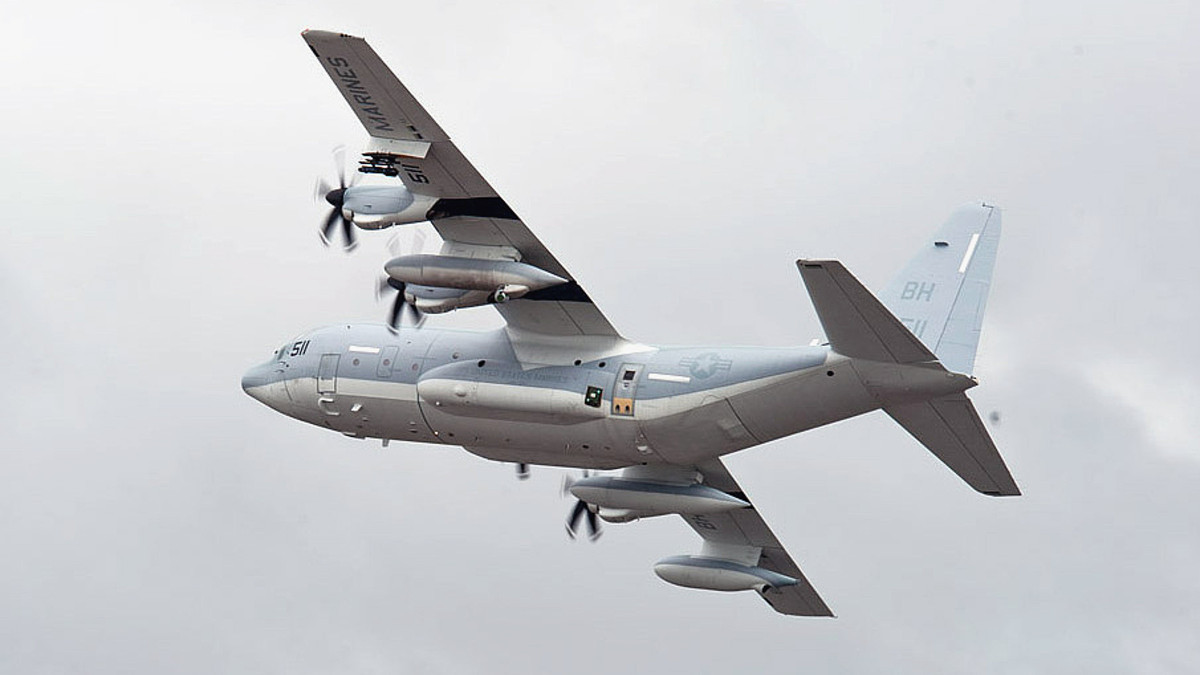
It has already proven to be relatively easy for new and improved capabilities to be added into podded versions of Intrepid Tiger and it could be equally simple to upgrade the roll-on/roll-off payload as time goes on. Future variants of the system could also make use of modular, open-architecture systems, which are increasingly the default when it comes to electronic warfare suites, as well as sensor and communications packages, among other electronics, to further speed up the integration of added functionality.
The basic roll-on/roll-off nature of the IT II(V)4 package could make it more adaptable to other platforms, as well, something that may be of interest to other branches of the U.S. military, as well as foreign allies and partners. The Marines are hardly the only component of the American armed forces that are looking to develop and field improved electronic warfare capabilities with a particular eye toward employing them in potential higher-end conflicts.
In the meantime, this recent flight test of the new version of Intrepid Tiger II on Osprey already marks a significant step forward in adding important electronic warfare capabilities to that aircraft and in expanding the overall capabilities of all of the variants of this already very valuable system.
Contact the author: joe@thedrive.com
